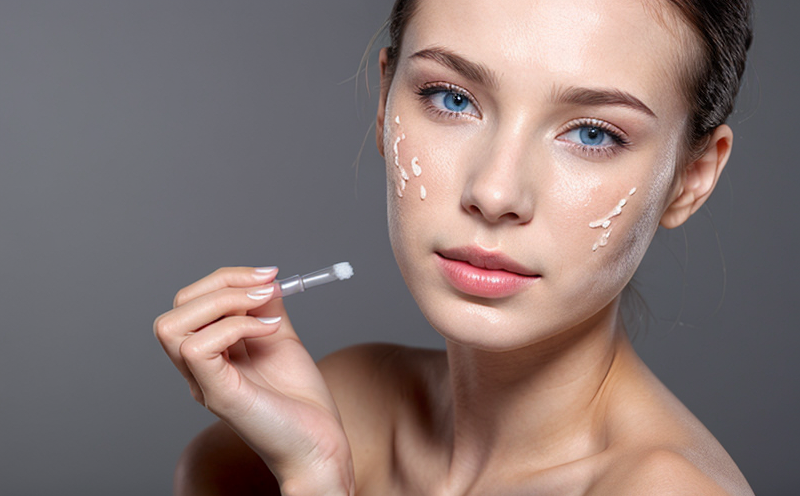Sensitization Testing of Fragrance Ingredients in Cosmetics
Sensitization testing is a crucial component in the development and quality assurance of cosmetic products. This service ensures that fragrance ingredients do not cause allergic reactions, which can lead to serious health issues for consumers. The process involves identifying potential allergens within fragrance formulations and evaluating their effects on human skin through various tests. By complying with stringent international standards such as ISO 10993-11:2008, this testing helps manufacturers meet regulatory requirements while ensuring the safety of end-users.
The fragrances used in cosmetics are complex mixtures containing numerous chemical compounds. Many of these ingredients have been identified as allergens due to their ability to trigger immune responses leading to allergic contact dermatitis (ACD). ACD is a condition where the skin becomes inflamed and itchy after coming into direct contact with an irritant or allergen. Therefore, conducting sensitization tests early in the product development cycle allows companies to make informed decisions about ingredient selection and reformulation if necessary.
During sensitization testing, a series of steps are followed to assess the potential for allergic reactions:
- Sample preparation: Fragrance ingredients suspected of causing allergies undergo extraction using appropriate solvents.
- Skin patch testing: Extracted samples are applied to the skin of test subjects, typically on their back or forearm, and monitored for signs of irritation over a specified period.
- Challenge tests: In some cases, a reapplication phase is conducted to confirm whether an individual has developed sensitization against the fragrance ingredient.
This rigorous approach ensures that only safe ingredients are included in final formulations. Additionally, it provides valuable data for continuous improvement and innovation within the cosmetic industry.
Applied Standards
| Standard Number | Title of Standard | Description of Application to Sensitization Testing |
|---|---|---|
| ISO 10993-11:2008 | Biological standard for the evaluation of allergic response potential in cosmetic ingredients | Defines methodologies for assessing sensitization risks associated with fragrance ingredients. |
| EU Regulation 1223/2009 | Cosmetics Regulation | Mandates safety assessments including sensitization testing prior to placing products on the market in Europe. |
Applied Standards Continued
| Standard Number | Title of Standard | Description of Application to Sensitization Testing |
|---|---|---|
| ASTM E1892-15 | Standard practice for in vitro human epidermis model test systems for the identification and quantitative assessment of allergens | Pioneers use of advanced technology to predict sensitization potential without relying solely on animal models. |
| IEC 62396:2014 | Electrical, electronic and related technical products – Safety requirements for the manufacture, design and operation of medical electrical equipment (ME) intended to be used in healthcare facilities by patients or other individuals | While not directly applicable, it underscores broader considerations around product safety that are relevant when discussing cosmetic ingredients. |
Benefits
Conducting sensitization testing offers numerous advantages to cosmetics manufacturers and developers:
- Enhanced consumer trust: Demonstrates commitment to product safety, thereby building long-term customer loyalty.
- Compliance with regulations: Ensures adherence to local and international laws governing cosmetic products.
- Risk mitigation: Identifies potential allergens early in the R&D process, reducing the likelihood of costly recalls or legal actions later on.
- Innovation support: Encourages safe experimentation by providing reliable data that can guide formulation decisions.
These benefits collectively contribute to a safer and more responsible approach towards cosmetic product development.
Why Choose This Test
Selecting sensitization testing for fragrance ingredients is essential due to several factors:
- Potential for severe health impacts: Allergic reactions can range from mild itching to life-threatening anaphylaxis.
- Regulatory requirements: Many regions, including Europe and the United States, mandate sensitization testing as part of cosmetic registration processes.
- Consumer demand: Increasing awareness among consumers about allergens has led to higher expectations for safe products.
- Competitive advantage: Brands that prioritize product safety are more likely to gain market share and customer preference.
By choosing sensitization testing, companies not only meet these demands but also position themselves as leaders in responsible manufacturing practices.





